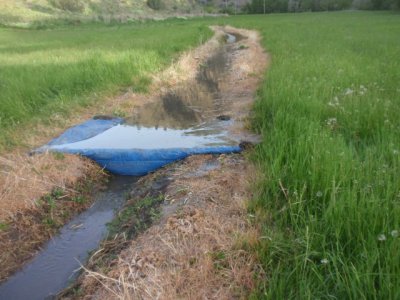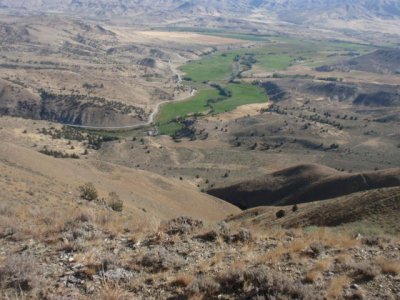Dave
Well-known member
I set the last tarp on the first round of irrigation this morning. No more starting each morning in hip boots. Well, until later next week when round 2 starts. But the grass is coming on good and we have plenty of water. View from the top of the hill behind the house. You can sure tell which part gets the water.




